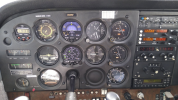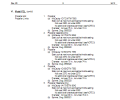idahoflier
Pattern Altitude
- Joined
- Jul 21, 2017
- Messages
- 1,731
- Display Name
Display name:
idahoflier
Are you sure that it is maintaining the nearly full cross section in flight (is it possible to make it partly collapse by tilting the coils (I'm assuming it is wire reinforced))?
No, not at all. In fact I know it's not maintaining it's complete cross section by being obstructed by about 1/2". Mentioned this to my mechanic and he didn't seem to think that's an issue. That's one of the things I'm going to remedy before having the prop re-pitched. The hose is a CAT hose which is much more flexible than SCAT...
Another thing to consider - set the prop horizontally on each aircraft and measure the angle (from horizontal) on the back of the blades at a few identical radii. Are the props really the same? (I found that the two blades on ground adjustable prop on my ride did not agree when I got it). Not a likely thing, but easy and low cost to check (get an angle app for your phone?).
That's a great idea, the iphone already has the level built in, although it's only good to about 1° resolution. Not sure that will be good enough, but worth a try...
Not saying that it isn't a loss of power, or something like exhaust restriction, but it may be worth looking at the cheap and easy things...
Agree, thanks!




